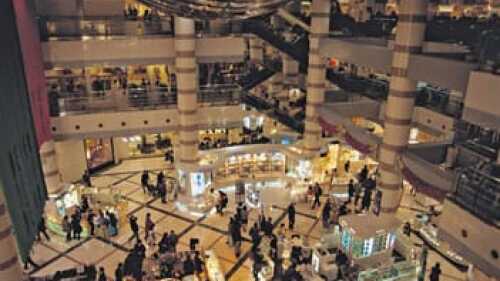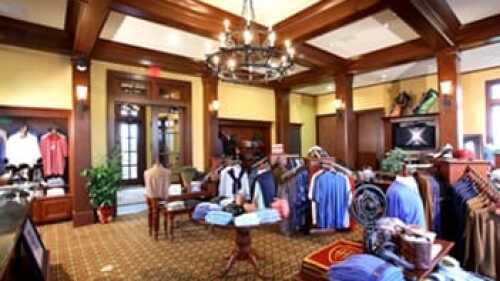Capturing gen Y’s time and money will involve commercial developments that can cluster cutting-edge shops and create an entertaining shopping experience, along with tech-savvy, trend-chasing retailers that can update new merchandise to drive repeat traffic.
As the economy comes out of the recession, an enduring shift is taking place in the retail landscape. Hard-hit by the severe economic downturn and at a point in life when retirement is on the horizon, the huge baby boomer generation is not likely to lead a spending revival the way it did after previous recessions. Instead, the more important demographic in the retail recovery will be the boomers’ children—generation Y (Gen Y).
Gen Y, or the millennials—so called because they are coming of age in the new millennium—is a larger group than the boomers. More than half of gen Y is already in the workforce and was less affected by the recession and job losses than other age groups.
“Gen Y shoppers will take the lead in the recovery” and drive change in the retail marketplace, according to a 2010 PricewaterhouseCoopers LLP study titled “The New Consumer Behavior Paradigm.”
The expected impact on commercial development includes something of a surprise, according to a host of retail consultants and developers: the much-maligned enclosed mall is poised to prosper if it can continue to lure trendsetting stores.
“The future of malls is going to be pretty good,” says Kenneth Gronbach, a Connecticut-based futurist, generational marketing consultant, and author of The Age Curve. “You’re going to see smaller stores, boutiques, and even department stores serving Gen Y because those stores can shift with changing tastes a lot better than big-box retailers.”
“It’s almost a return to the mall,” adds Jeff Green, a Phoenix-based retail feasibility consultant and ULI member, “as long as mall developers can give Gen Y what they need—the interactive experience and a place to be seen.”
The importance of Gen-Yers can hardly be overstated: they are now the largest group of consumers in America. The millennials—generally born from 1977 to 1995—are now between the ages of 17 and 34. According to the U.S. Census Bureau, this group of 77.4 million people has surpassed the number of boomers, 76.2 million. “The balance of economic power is shifting as Gen Y’s share of the market grows with increased earning power and as boomers begin to retire,” says a 2008 Deloitte LLP report on emerging trends in retailing.
As is the case with every generation, Gen-Yers are different from their predecessors. They are multicultural, plugged in, image conscious, impatient, autonomous, and high minded. The Pew Research Center, in a report last year on generational differences based on a comprehensive survey, found generation Y to be the most ethnically and racially diverse of the generations, with Hispanics, Asians, and African Americans together accounting for 40 percent of the group. In addition, a higher proportion of millennials than other generations lives in either the suburbs or cities.
But what truly sets Gen Y apart is technology. Three-quarters of millennials have created a social networking profile, compared with 30 percent of boomers, and 62 percent connect to the internet wirelessly away from home using a laptop or hand-held device, compared with 35 percent of boomers. For millennials, a few touch-pad clicks can produce reviews and price comparisons while shopping. “Gen-Yers are more efficient and effective consumers,” says Stephen Coslik, chairman and chief executive of the Texas-based Woodmont Company retail developers and chair of ULI’s Commercial and Retail Development Council (Green Flight).
| The Marketplace in Bakersfield, California. |
In response, retailers and retail developers are increasingly setting up shop on social media sites. The California-based Donahue Schriber Realty Group, which develops and leases grocery-anchored neighborhood centers, has begun developing websites for its centers and is beginning to market upcoming sales and coupons on Facebook and Twitter. “We are shifting away from the traditional way of communicating with our customers, like direct mail,” says Lawrence Casey, Donahue Schriber’s president and chief operating officer, and chair of ULI’s Commercial and Retail Development Council (Blue Flight).
A lot of effort, then, is going into capturing Gen Y’s attention. But what do they want?
According to retail consultants, millennials are brand and value conscious. L2, a New York City–based think tank specializing in digital research, found in a survey last year of higher-earning millennials that over 80 percent of respondents had an affinity for brands, with one-third acknowledging having an “occasional brand crush.” They want cool merchandise, but they do not expect to pay a premium for it.
“That is different from other generations,” says Deborah Brosdahl, an associate professor in the Department of Retailing at the University of South Carolina, whose own study on college students’ preferences for brands and value was published this spring. “They’re brand conscious but not brand loyal for very long. They grow up and grow out of it.”
Gen-Yers are into brands and stores like American Eagle, Zara, J.Crew, Prada, and Burberry—companies that create fashionable clothes at a fraction of the couture price, appealing to millennials’ practicality. This generation helped usher in the return of the sandal, and it has a penchant for designer athletic apparel like Under Armour. But above all, Gen-Yers love Apple, for its uniqueness. In L2’s survey, Apple topped the list of “last prestige brand purchase” and finished first among men and second among women as the brand Gen-Yers aspired to own.
Where will millennials go to buy these brands? The internet, certainly. But there is also increasing evidence that Gen-Yers still enjoy the store experience, too. “I don’t think they’re using the internet to change the fact that they will visit brick-and-mortar stores. Touching, feeling, and the purchase are still taking place at our centers,” says Casey.
Not much consumer research has been done on Gen Y’s shopping preferences, but Brosdahl and another professor in the Department of Retailing at the University of South Carolina published a study in a recent edition of the Journal of Textile and Apparel Technology and Management. They found that the types of physical stores the sample of college students most preferred were, in order, specialty stores, outlet stores, and traditional department stores.
| |
One commonality among those store types is they are usually found at shopping centers or malls. Millennials, then, “still will be patrons of stores we see in malls,” says Brosdahl. Unlike their parents, who have grown tired of congested mall parking lots and cramped indoor concourses, Gen-Yers grew up in malls and feel perfectly comfortable there.
But, according to retail consultants, malls will need some changes to capture Gen Y’s attention—more interactive experiences, such as with LCD screens displaying products or showing sporting events, as well as smaller, more nimble boutique-type stores that can shift with consumer tastes. The models for this type of store range from Nike to Abercrombie & Fitch—places that combine appealing displays, updated merchandise, younger staffers, and contemporary music.
But the poster child of this approach is the Apple Store. Apple’s products are so innovative that on days when new products are launched, customers often arrive before dawn and wait in long lines. Also, Apple’s stores themselves are small and stocked with a limited number of products yet full of younger, eager-to-please staffers who provide demonstrations. Consequently, Apple stores are magnets, drawing constant traffic that then tends to linger at the shopping center, visiting a clothing store or stopping for coffee.
“There’s definitely a residual effect on the other retailers,” says Jim Davis, vice president of leasing for RED Development, which has Apple stores in developments in Omaha, Nebraska, and the Kansas City suburb of Leawood, Kansas. “All the national retailers will tell you they love Apple and want to be near them because of the traffic. They’re good for everyone. They act as an anchor.”
Capturing Gen Y’s time and money, then, will involve commercial developments like malls that can cluster cutting-edge shops and create an entertaining shopping experience, along with tech-savvy, trend-chasing retailers that can update new merchandise to drive repeat traffic.
“Otherwise,” California State University’s Kaylene Williams and Southern Connecticut State University’s Robert Page wrote in a recent issue of the Journal of Behavioral Studies in Business, "[Gen Y shoppers] will get bored and stop coming.”







